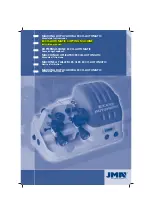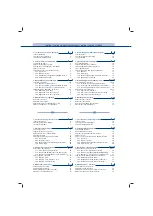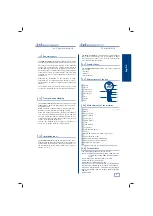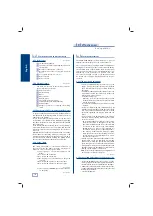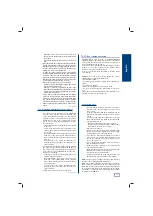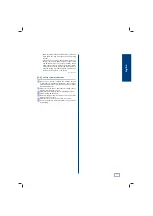
12
English
3.2.2 Copying a key without a stop
•
Introduce the two wedges (2) into one of the ver-
tical grooves (R) of each clamp, depending on the
length of the key to be copied.
•
Support the tips of the keys against the wedges (2).
The keys will thus be adjusted.
•
Finally, press the clamps and withdraw the wedges (2).
•
Before starting the cutting cycle, check that the
start of the notching of the key is to the right of
the tip of the feeler (to make sure that all the
teeth of the key will be reproduced), and that the
head of the key is to the left of the tip of the feeler
(to make sure that there will not be an undesired
collision between the head of the key and the tip
of the feeler).
See figure 11
3.2.3 Copying a cruciform key
•
This type of key is copied on side 1 of the clamp.
•
The keys must always be introduced into the
clamps from left to right.
•
Introduce the two wedges (5), with the opening
or rebate facing upwards, into one of the vertical
grooves (R) of the clamp, depending on the length
of the key to be copied.
•
Support the tips of the keys against the wedges (5).
The keys will thus be adjusted.
•
Finally, press the clamps and withdraw the wedges (5).
•
The cutting of the key is carried out in three ope-
rations, turning and supporting each time the stop
of the key against the wedge (5).
•
Before starting the cutting cycle, check that the
start of the notching of the key is to the right of
the tip of the feeler (to make sure that all the
teeth of the key will be reproduced), and that the
head of the key is to the left of the tip of the feeler
(to make sure that there will not be an undesired
collision between the head of the key and the tip
of the feeler).
See figure 12
When carrying out any maintenance operation, the
following conditions must be complied with:
Maintenance
and safety
4
Changing the cutter
4.1
Never carry out any maintenance with the machine
in operation.
The electric power cable must be disconnected.
The instructions in this manual must be closely follo-
wed.
Use original spare parts.
3
1
2
4
To change the cutter proceed as follows:
Turn off the machine using the general switch and
disconnect the power cable.
Loosen the two studs of the cutter guard and remove
it momentarily.
Using the two 18-size fixed spanners, block the axis of
the cutter and release the nut (K) –left-hand thread
– securing the cutter (F).
Replace the cutter and finally replace the cutter
guard.
After changing the cutter it is advisable to carry out a
lateral and depth adjustment of the copier.
3
1
2
4
5
Changing the brush
4.2
To change the brush proceed as follows:
Turn off the machine using the general switch and
disconnect the power cable.
Loosen the two studs of the cutter guard and remove
it momentarily.
Using the two 18-size fixed spanners, block the axis
of the cutter and release the screw (R) using an Allen
key.
Replace the brush and finally replace the cutter guard
See figure 13
3
1
2
4
Adjusting the depth of the slide
4.3
This adjustment serves to protect the clamps from possible
collisions between the feeler and the cutter.
The distance between the cutter-feeler and the clamps
should be about 0.15 mm. If this distance is changed, pro-
ceed as follows:
•
Unblock the slide and bring the clamps near to the
feeler and the cutter. In order to do this, follow the
steps below:
- Place any key in the left-hand clamp and start the
cutting cycle.
- When the feeler is more or less in the middle of
the bit of the key, turn off the machine by activa-
ting the general switch to the rear.
- Disconnect the power cable as a security mea-
sure.
- Take out the key that was secured to the left-
hand clamp.
•
Loosen slightly the blocking stud (Z) using an Allen
key.
•
By turning the stop stud (W) clockwise or anticloc-
kwise, the clamps can be moved towards or away
from the cutter and feeler.

